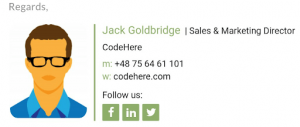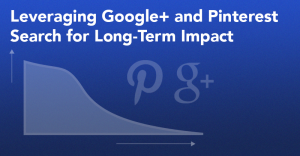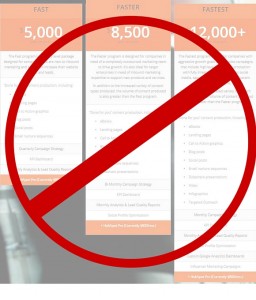Even the best influencer marketing campaigns can face challenges. Contributor Caitlin Jeansonne discusses the issues that can arise and how marketers should deal with them.
 Just as content marketing was on everyone’s lips a few years ago, 2016 was the year of “influencer marketing.” Working with content creators who have large social media followings to promote your brand is enticing and can be a great way to reach untapped audiences. But it’s not as easy as you think — and does not always go as planned.
Just as content marketing was on everyone’s lips a few years ago, 2016 was the year of “influencer marketing.” Working with content creators who have large social media followings to promote your brand is enticing and can be a great way to reach untapped audiences. But it’s not as easy as you think — and does not always go as planned.
Even with the most strategic and well-planned influencer campaign, issues can arise. Here are a few problems that marketers may face and how to deal with them.
1. You can’t find enough perfect influencers
It’s true that there are millions of bloggers and content creators out there, but it’s not always that easy to find influencers who fit your exact strategic specifications — perhaps those who live in a specific geographic area, have particular buying habits or have never touched a competitor’s products.
How to prevent it: No one discovery tool will be perfect, because each one has a specific place in the influencer landscape. Use a variety of tools to search different corners of the internet and take advantage of each one’s specialties.
For instance, we find that TapInfluence has a broad network of female style and fashion bloggers, while Upfluence’s discovery tool, Façade, allows a high level of granularity within its search criteria.
How to fix it: Look in unconventional places outside of what your tools recommend, like suggested users that Instagram serves up natively after you follow someone.
Expand on the influencers you have already identified and love; comb through their blogrolls, guest bloggers and people they interact with online to find other influencers like them.
Don’t hesitate to reach out and ask for specific recommendations from your influencers. Do you feel as if you’ve scoured every last corner of the internet yet? If not, keep digging in.
If worse comes to worst, determine where you can be lenient on your influencer specifications without sacrificing your strategy. Perhaps you are willing to work with slightly more micro-influencers or expand your geography a bit.
Don’t make these decisions lightly; let your influencer strategy guide the way here — and be prepared to justify your “quality over quantity” approach.
2. Influencers don’t like the terms of your contract
You’re getting questions about the particulars of your terms and conditions, and influencers seem wary to work within the guidelines you’ve laid out.
How to prevent it: Determine the contract’s must-haves (like rights usage) and what you’re willing to be looser about for the perfect influencer (like timelines and payment schedule, perhaps). Determine as much of this in advance as possible, for swift approvals when issues arise.
How to fix it: To be completely honest, you probably can’t. If the terms of the contract have been decided on by the agency, brand, management platform and all of the other interested parties, it’s hard to justify changes for even the most perfect influencer, unless you’re negotiating contracts separately for each content creator you work with.
3. Instead of creating content in their own voice, an influencer posts brand messaging verbatim
You spend hours crafting the perfect influencer brief, meticulously characterizing the feeling and tone of the brand with compelling reasons to believe and a clear call to action. An influencer loves your work so much that they copy and paste large pieces of it into their blog post. What now?
How to prevent it: It’s your responsibility to empower your influencers with everything they need to create original content. Give clear guidelines without dictating every step.
For instance, our influencer briefs include a variety of content ideas intended to inspire creativity and provide some guardrails to ensure the influencers’ original content drives our campaign goals.
How to fix it: Be straightforward about your expectations; saying something like “We’d love for you to include this in your own voice” goes a long way.
Keep in mind that it’s always easier to speak in your own voice when you’ve experienced something firsthand (like touching or using a product) — so when influencers are weaving in elements they haven’t experienced, like the history of a product or background on a brand’s mission, this can be tricky for them.
Have the influencer focus on their firsthand impressions of these elements — for instance, their thoughts or feelings about those elements vs. just retelling the story.
4. Content approvals are taking too long
Content approvals are dragging, and deadlines are looming. Whether delays are coming from the internal team or your client, it may not be your fault, but it is your problem.
How to prevent it: Set clear guidelines on the approval process. Who owns the process on your end and with the brand? Determine who is responsible, accountable, consulted and informed every step of the way.
Be extremely clear about exactly what you’re asking of each person to whom you send content. Our rule of thumb is to always ask influencers to correct misspellings and fix typos. With grammar mistakes, however, we are much more lenient.
We want to be sure the content reads well and isn’t a poor reflection of the brand, but we are by no means checking it for perfection (so you may want to caution your internal team about getting caught up in ensuring perfect grammar or AP style). We tend to leave stylistic choices alone and only ask content creators to update something that is unclear or is a mistake.
By the time the content gets to the brand, it should read well, be typo-free and be reviewed strictly for brand standards and voice. Make this clear.
How to fix it: Educate everyone involved on the value of authentic content. Content should feel as if it came from the mouth of your influencers; that’s why you chose them to work with in the first place.
In short: They know their audience, and you know the brand. Let content creators speak as authentically as possible to their followers while you protect brand voice and campaign strategy.
What challenges have you encountered in your influencer campaigns? How have you addressed them? Please share your tips on Facebook, Twitter or Marketing Land’s LinkedIn Group.
Some opinions expressed in this article may be those of a guest author and not necessarily Marketing Land. Staff authors are listed here.
Marketing Land – Internet Marketing News, Strategies & Tips
(60)










